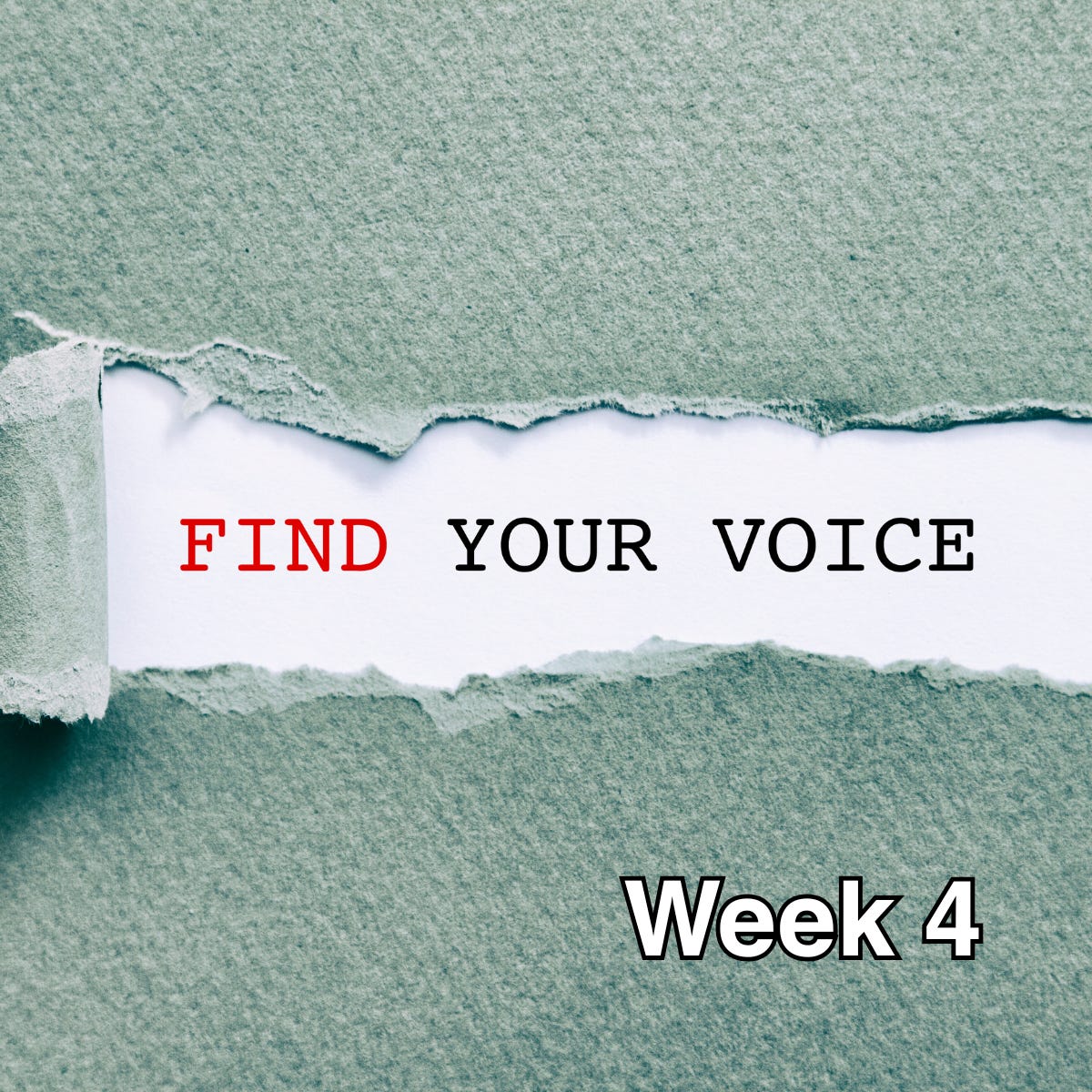Document Your Voice. Make It Human, Even in an AI World.
Week 4 of 8. Build a guide that keeps your brand human across platforms.
Hey,
If your brand shows up in a tweet one way, then sounds totally different in a LinkedIn post or email…
You’ve got a problem.
Not just a style problem.
A trust problem.
People connect to voices they recognize.
Not perfect voices. Not polished ones.
Human ones.
And when your brand starts sounding like AI wrote every word, people tune out.
Your voice deserves better than that.
Your audience does too.
This week is about documenting your voice in a way that keeps it real.
Not just for you — but for your whole team, now and in the future.
Why this matters more now than ever:
Without documentation:
✘ Your voice disappears when a team member leaves
✘ Content sounds robotic, even if the words are “right”
✘ AI tools or freelancers water down your message
✘ Your audience starts to feel like they're talking to a bot
But with a clear, flexible style guide:
✔ Everyone writes content that sounds like it came from a real human
✔ Your voice stays strong across every social platform
✔ You save time and edits because the voice is already agreed on
✔ Your audience builds trust with the person behind the post
Here’s what your guide needs to include:
1. Voice Attributes
Pick 3 to 5 traits that describe how your brand speaks.
These aren’t buzzwords. They’re how you connect.
Example:
“Confident but warm” — We tell the truth clearly. We don’t hide behind big words. We care how it lands.
2. We Do / We Don’t List
This is where you get real. Define your edges.
We Do:
• Keep it human, always
• Use plain language, even for complex ideas
• Let values lead tone
We Don’t:
• Talk like a brand manual
• Chase trends that don’t align
• Let AI strip away the soul
3. Tone by Scenario
Your voice stays steady. Your tone shifts with the moment.
Examples:
• When celebrating: Be vibrant, be specific, share their joy
• When solving a problem: Keep it honest, clear, and calm
• When answering questions: Stay simple, and offer more than just facts
4. Mechanics That Match Your Mission
Small things make a big difference online:
• Short sentences, 1 to 3 lines max
• Use contractions — people don’t say “you are” unless they’re mad
• Go light on exclamation points unless it really calls for one
• Use numbers if it helps people scan faster
• Always format for mobile — because that’s where most people are reading
5. Show, Don’t Just Tell
Use real examples from your content. Drop in screenshots or past posts that sound like you.
Let the team hear your brand.
Bring your voice to life:
A PDF sitting in Google Drive won’t do the job.
You’ve got to activate it.
• Host voice training sessions
• Have team members rewrite a paragraph in brand voice
• Do a quick voice audit on your last 3 social posts
• Encourage people to ask, “Does this sound like us?”
A few brands doing this right:
• Mailchimp documents the difference between tone and voice clearly and consistently
• Spotify gets their vibe across globally with just four key voice traits
• Zendesk grew from scrappy startup to trusted global brand while keeping their tone grounded and real
Your move this week:
Write down 3 to 5 voice traits with clear examples
Create your We Do / We Don’t list
Outline how tone should shift in common situations
Collect a few real examples that show your voice in action
Start messy.
Start now.
The more your team speaks from the same human place, the stronger your presence becomes — on social, in email, on every screen.
Next week, we’ll talk platform-specific tone. Because you shouldn’t sound the same on TikTok as you do in a donor thank-you email. But your voice? That should still feel like you.
Let’s keep going.
—Robin
P.S. I have a checklist that will make this process super easy. It’s available for all of our premium members.
Here is a sneak peek:
Checklist
1. Foundation Research
● Conduct a comprehensive content audit
Collect communications from across all channels (social media, emails, website, product descriptions, customer service scripts) and mark passages that feel most aligned with your ideal voice and those that feel off-brand to identify existing patterns.● Analyze your founding story
Revisit why your company was started by reviewing the language founders use when describing their motivation. These origin stories often contain authentic voice nuggets that can form…
Keep reading with a 7-day free trial
Subscribe to Land the Talk: Social Media Flow for Nonprofits & Speakers to keep reading this post and get 7 days of free access to the full post archives.




